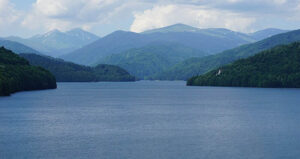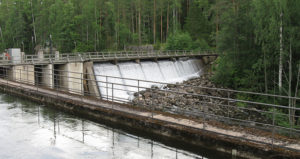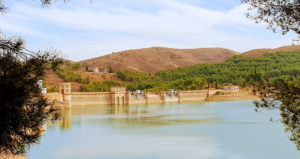Europe-wide dam removal has slow start but big ambitions

-
 Nancy Smith
Nancy Smith
Share article:
Europe-wide dam removal has big ambitions. July marks the first simultaneous crowdfunding effort to remove obsolete dams and barriers in Europe’s rivers. Led by WWF, Big Jump Europe is an initiative in partnership with Dam Removal Europe and together they represent more than 300 nature conservation organisations. In 2021, they are bringing together citizens to raise funds for the removal of obsolete dams and barriers.
Events to start the crowdfunding were held 5 to 11 July in the participating countries to highlight how removing can bring life back to Europe’s rivers. This included collective ‘Big Jumps’ where barrier removal campaigners jumped into rivers all over to send a strong signal to European leaders that much more needs to be done to protect and restore rivers and implement the Water Framework Directive.
Irene Lucius, WWF Central and Eastern Europe Region Conservation Director says: ‘Nothing can restore rivers as fast and effectively as dam removals. It is a quick action with swift results. It’s a one-time investment followed by a lifetime of benefits, including return of migratory fish and other wildlife and plants, better water quality, natural capacity to reduce impact of extreme floods and greater resilience to climate change.’
Slow start
Despite the Europe wide efforts to initiate a co-ordinated crowd funding campaign, the seven dam or barrier removal projects in the UK, Spain, France, Germany, Italy, and Ukraine have only raised between 0 to 10 % of their goal total. The fundraising targets are ambitions with one dam needing EUR 35,000 to remove. Nevertheless, this co-ordinated approach follows the crowdfunded removal in June 2021 of an obsolete barrier on the Hucava River in Slovakia – proving that people power can help bring life back to Europe’s rivers.
Old barriers are causing new problems
Barriers and dams can be useful in rivers to help regulate water flow, protect against floods, and create consistency in water availability. However, when dams become obsolete or abandoned, they cause environmental degradation. Removals support free flowing aquatic organisms and sediments, increasing the natural riverine processes, river biodiversity and creates favourable conditions especially for the migratory fish population (which is currently facing a 93 % decline in population).
Small dams still have big impacts
It is estimated that there are at least 1 million dams in 36 European countries – over 150,000 of these are obsolete and currently serve no purpose. Around 600,000 dams in Europe are small obstacles under 2m height, which might appear less harmful than mega-dams, but a series of small dams along the same stream have a huge cumulative impact on the health of rivers.
Improving biodiversity
By removing only 30,000 dams (representing 3 % of the estimated 1 million dams in Europe) there could be a river reconnection potential of nearly 50,000 kilometres. This is double the current target of 20,000 kilometres set by the European Commission in the 2030 Biodiversity Strategy.


















